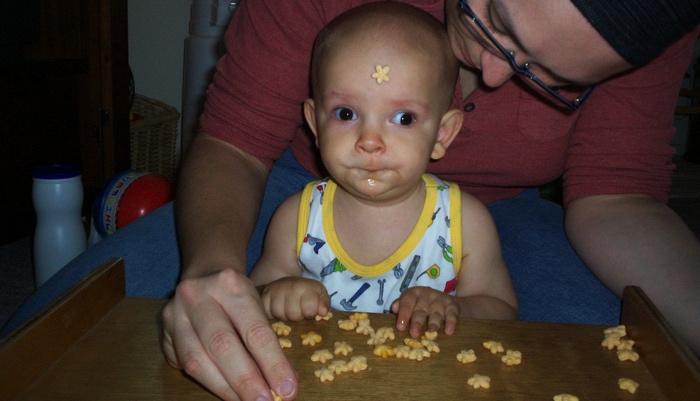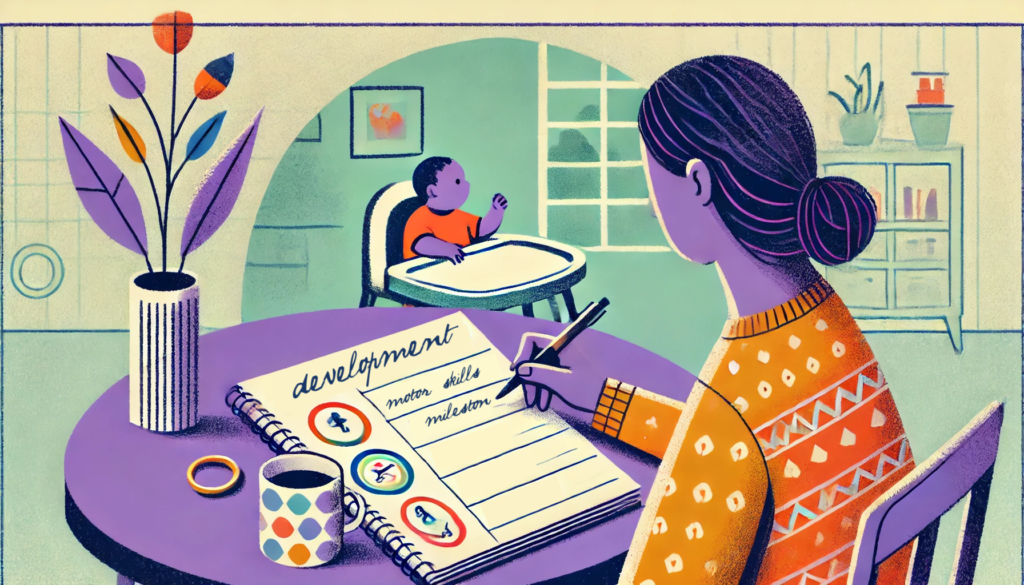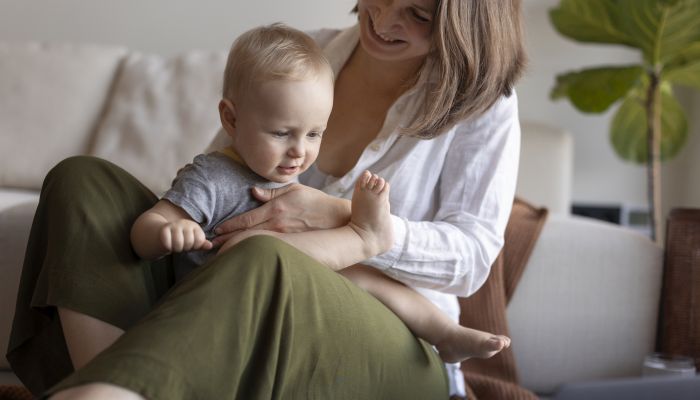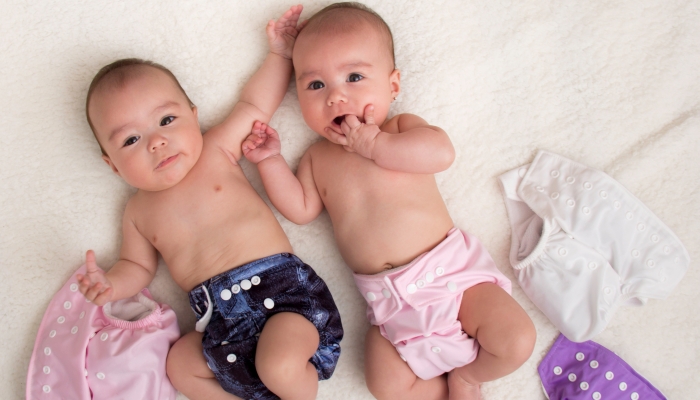Picking Up Puffs: Working on Developmental Milestones One Step at a Time

When you choose a developmental milestone to work on with your child, it’s important to break down your goal into simple, attainable steps. Let’s take eating, for example. You may say to yourself, “I want my baby to be able to feed herself.”
But what does that mean exactly? Hold the spoon, dip, and bring it to her mouth? Hold her cup and drink? Wipe her mouth with a napkin?
Obviously, this goal is too broad, so it’s best to begin by writing a list (from simple to more complex) of all the little things that would make this milestone a reality. Things like pick up small pieces of food, bring food to mouth, hold spoon, bring spoon to mouth, etc. Then start at the top of your list and work your way down.
This makes meeting goals much easier and you and your child will feel a greater sense of accomplishment (rather than frustration). And focusing your energy on one simple goal at a time is a much better recipe for success!
Here’s how we worked on setting up goals when we wanted to help our son learn to feed himself…
Begin by stating your goal in simple terms.
For our son, Ivan, I decided that our first step would be to help Ivan eat finger foods on his own, which requires a lot of fine motor mastery but no utensils. Ivan loves Gerber Finger Puffs (they’re small and melt in the mouth) so that became our first goal: I want Ivan to feed himself Finger Puffs.
Next, brainstorm how you might accomplish that goal. Think about what the goal requires your child to know and experiment with activities that will help strengthen that knowledge.
We decided that the first step in attaining our goal was to improve Ivan’s grasp. To do this we provided him with many opportunities to play with and manipulate small objects: long, skinny pegs in a peg board; small, round blocks; smooth or bumpy toys; cups, blocks, and rings that stack and come apart. We wanted to accustom Ivan to different sizes and textures and to using his hands to move objects, take things apart, and hold them long enough to bring them to his mouth. This helped to improve his grasp and allowed him to better understand how his hands work.
Another tactic we came up with was to work on Ivan’s hand sensitivity. To help Ivan get used to playing with his hands, we created fun games that involved clapping, holding hands, swinging hands, and touching fingers (all while singing and having fun, of course). Our Occupational Therapist also brought us a brush that’s supposed to lessen Ivan’s sensitivity and give his body needed physical feedback, so we made sure to use the brush on his hands, too. We also encouraged Ivan to play with sticky substances, like pudding or whipped cream. Fortunately, Ivan’s sweet tooth out weighs his aversion to the sticky texture!
Finally, we were sure to offer Ivan Finger Puffs nearly every day so he could touch and play with them. We’ve experimented with different positions and locations to find the one that Ivan seemed to be the most comfortable in. For example, we sat Ivan on the floor and spread the Puffs in front of him, but in order to pick up a Puff he’d need to master one of the more mature grasps and there is a much longer distance between the Puff and his mouth when he’s positioned like this. The best location we’ve found is his First Years baby seat that our Physical Therapist brought us. This chair is low to the ground so Ivan can place his feet on the floor with his knees bent at 90°. The tray is just at elbow level and the lip of the tray isn’t too deep. We place a cloth on the tray so the Puffs don’t scoot around too much and Ivan can find them easier.
Once you get started, watch for fun ways to encourage learning!
One trick we found to help Ivan get used to touching the sticky puffs was to bury his hand in a big mound of puffs. Ivan thought this was funny! He also enjoyed patting and touching the Puffs in the tray so we encouraged this. Eventually he was able to pick up the puffs and bring them to his mouth! Now Ivan is a pro at picking up puffs and he has even started using more mature grasps while he plays with the puffs!
Celebrate success!
When your child does well, be sure to praise them with lots of hugs and kisses! Positive reinforcement always works wonders.
Good luck to you and your child. Soon you too will be celebrating success!
Related Posts

Development, Special Needs
How to Track Milestones for Developmentally Delayed Babies
Parents of developmentally delayed babies can explore practical tools and strategies to track milestones, celebrate progress, and support their child’s unique developmental journey.

Fine and Gross Motor
5 Alternatives to Tummy Time for Babies with Motor Development Challenges
Does your baby struggle with tummy time due to motor development challenges? These alternatives to tummy time will offer the same benefits.

Development
Should Twins Share a Room?
Wondering if your twins should share a room? We’ll explore the pros and cons of room-sharing for twins right here before you make your decision.